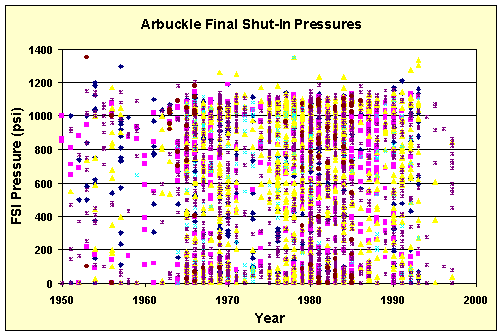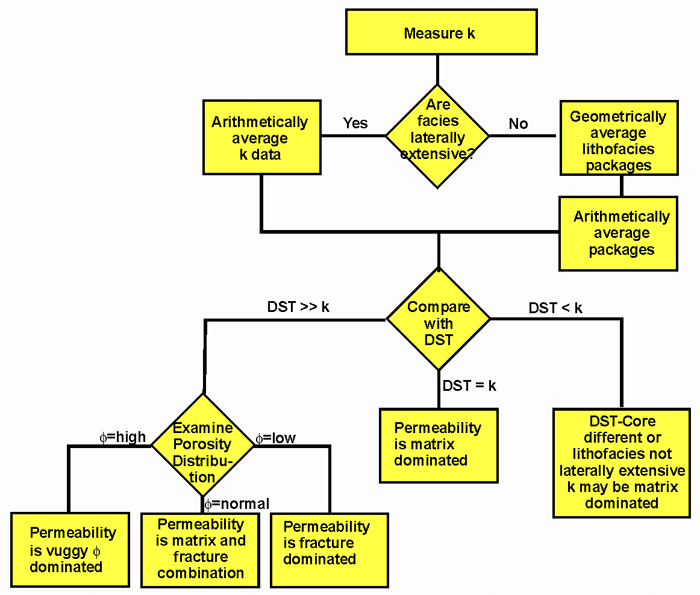
Integrating Plug to Well-Scale Petrophysics with Detailed Sedimentology to Quantify Fracture, Vug, and Matrix Properties in Carbonate Reservoirs
Kansas Geological Survey
Open-file Report 99-47
 |
Integrating Plug to Well-Scale Petrophysics with Detailed Sedimentology to Quantify Fracture, Vug, and Matrix Properties in Carbonate Reservoirs |
Kansas Geological Survey Open-file Report 99-47 |
 (Gerlach,
1998) (Gerlach,
1998) |
Final shut-in pressures for thousands of wells on the
Central Kansas Uplift exhibit a wide distribution with a significant number
exhibiting pressures less than half the regional hydrostatic pressure.
These low values may indicate actual low reservoir pressure as a result
of production. However, maintenance of the low pressure requires sufficiently
low permeabilities that water drive is prevented from recharging the pressure.
The low pressures may also reflect a delayed response of pressure due
to low permeability. This result can be interpreted to indicate that a
significant portion of the Arbuckle intervals tested exhibits low permeability.
Analysis of 52 DSTs (Carr and others, 1986) indicates that the permeability of the Arbuckle at the well scale ranges from 1-755 md with a mean permeability of 134 md. Results shown here indicate that some lithofacies exhibit matrix permeability values as high as 1,200 md. |
Work is still on-going testing the concepts and methodology present here. Arithmetic averaging of permeabilities and use of the permeability-porosity trend has provided a significantly better correlation between DST and smaller-scale permeabilities. In the current methodology for quantifying the relative roles of matrix, vug, and fracture flow, the range of conditional inputs and analyses can be roughly characterized using a simple boolean model:

|
|
e-mail : webadmin@kgs.ku.edu
Last updated November 2002
http://www.kgs.ku.edu/PRS/Poster/1999/99-47/P3-05.html